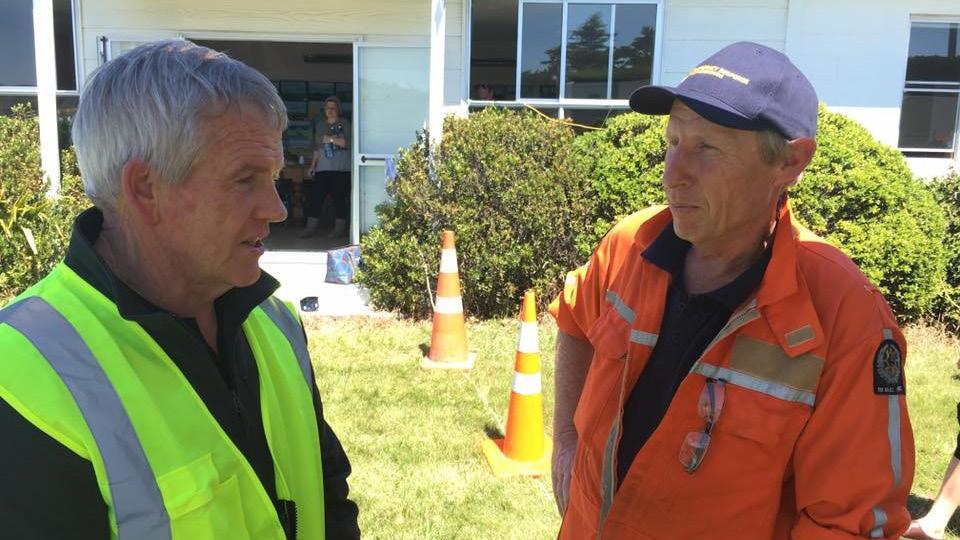
4 minute read
Biosecurity Watch - Greening Marlborough
SOPHIE BADLAND
While this column is usually dedicated to biosecurity matters, this month’s focus is on a local biodiversity initiative. Biodiversity refers to the variety and variability of living things present in an ecosystem. A healthy, sustainable ecosystem contains a community of many living things with numerous diverse interactions happening between them, in balance with each other and their environment. Much natural biodiversity is lost when land is cleared for vineyards. To help combat this, 2020 sees the launch of Greening Marlborough, a landscape-level planting programme, encouraging growers to plant more
native trees and plants in and around Marlborough’s vineyards. An initiative of the Marlborough Landscape Group, the Greening Marlborough project is supported by the Marlborough District Council (MDC), New Zealand Winegrowers (NZW) and Wine Marlborough.
How does it work? The MDC, via the Marlborough Landscape Group, are offering dollarfor-dollar funding for growers to purchase native plants to be planted in and around vineyards, to a maximum of $2,000. Growers take responsibility for watering and maintenance of the plants. You can apply online; there is an easy application form on the NZW website at nzwine.com/greenmb or at Wine Marlborough’s site on wine-marlborough.co.nz/greeningmarlborough/
What are the benefits to growers? When vineyards are planted, some of
the land that is cleared doesn’t end up being planted in grapes. Areas such as riparian banks and margins, forgotten corners (unmanaged/unused areas), entrances and along driveways, and around vineyard outbuildings are all good spaces to encourage biodiversity in vineyards, and some species are suitable for undervine planting too. • Increasing biodiversity in vineyards by planting native species can have many benefits: • Native trees help to create corridors for native birdlife to move along and are associated with a range of beneficial insect species which can help to control vineyard pests. • If species that grow naturally on the site are chosen and well looked after initially, they will require only very basic maintenance once established, reducing labour input. • Plantings can create shade along
the margins of streams and ponds, helping to slow weed growth and provide habitat for invertebrates.
• Native plantings can enhance
the appeal of your site to tourists, visitors and staff, and if done well can set your site apart from others and give it a competitive advantage. Research from Waipara has shown that visitors who walked a vineyard biodiversity trail found it enhanced their experience. They felt more connected to the winery and some were more likely to buy wine from the site afterwards.
Sustainability, biosecurity and biodiversity NZW is fully supportive of Greening Marlborough and encourages members to take advantage of the initiative. Building biodiversity in Marlborough vineyards should help to make vineyard ecosystems more resilient, and eventually require less inputs, therefore becoming more sustainable and less susceptible to incursions of new pests and diseases.
New biosecurity advisor appointed Jim Herdman has been appointed by New Zealand Winegrowers (NZW) as their new biosecurity advisor. Jim’s last role was with the Marlborough District Council as a senior biosecurity officer, where his work included managing the Chilean needle grass programme, particularly within the Awatere and Blind River areas. Along with other programmes, he worked within the wider biosecurity scene advocating for farm and vineyard biosecurity plans to be included in properties’ wider land management and environment plans. Jim was always impressed by the farmers, growers and landowners who were committed not only to looking after their own assets, but who also look after their neighbours’ interests by instigating good monitoring and pest/weed management programmes. Jim also managed other land-based and marine biosecurity programmes in the Marlborough region.
Prior to working for the council, Jim travelled to Africa, Asia and Europe where he volunteered in many countries, taught in schools and worked on various conservation projects. He considers it a privilege to have had the opportunity to see so much of the world, to have met and worked with so different people and to have contributed in a small way to some very worthwhile projects. Between his overseas travels, Jim returned to his home in Renwick several times where he worked within the viticulture industry.
Throughout his career, Jim has also maintained an interest in emergency management, and was a long serving member of the Renwick Volunteer Fire Brigade as well as a rural fire officer for the Department of Conservation (DOC) for many years. Jim has been deployed and seconded overseas six times, firefighting in the United States and Australia. He has also had operational roles as sector manager in the responses to the 2016 Kaikōura earthquake and 2011 Christchurch earthquake.
Jim has worked for the New Zealand Forest Service and DOC in land management and asset management roles. One of his main outputs in these roles was pest and weed management on site-based programmes. During this time, he was fortunate enough to be seconded to Rocky Mountain National Park for six months, where he observed destruction of the native forest due to the pine beetle’s ability to survive and multiply mainly due to climate change. These observations sparked his interest in longer term sustainability and good biosecurity practice. NZW is very pleased to have Jim on board and he is already making a great addition to the biosecurity team. Remember – if you see anything unusual in the vineyard, Catch it; Snap it; and Report it to the Biosecurity NZ hotline on 0800 80 99 66. You can also get in touch with the New Zealand Winegrowers biosecurity team by emailing biosecurity@nzwine.com, or calling Sophie (0277004142) or Jim (0276448010).

Jim Herdman, right, with Marlborough mayor John Leggett during the Kaikoura earthquake response.
IF YOU SEE ANYTHING UNUSUAL CATCH IT. SNAP IT. REPORT IT.







